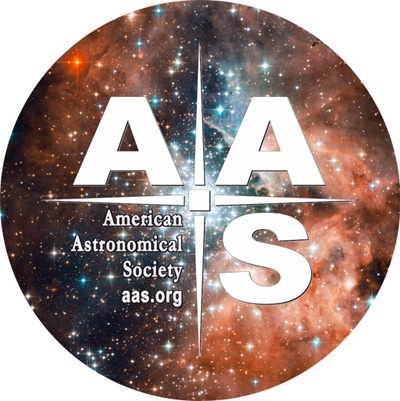31 January 2020
Tarini Konchady

An artist’s impression of K2-18b orbiting K2-18 along with another planet in the system. [NASA/ESA Hubble, M. Kornmesser]

Water is critical to life as we know it on Earth. So naturally, finding evidence of liquid water on a planet in its star’s habitable zone is extremely relevant to searches for extraterrestrial life. Thus far, we’ve only discovered water vapor in the atmospheres of massive, short-period gas giants — but new observations of sub-Neptune K2-18b have now changed that.
Hubble Has Its Eye on You

Fits to K2-18b’s white-light curve (top) and an example spectral light curve (bottom) with data points from the Hubble observations overplotted. The white-light curve considers points across all available wavelengths while the spectral light curve considers points across a specific wavelength range. The wavelength range for each plot can be seen in the lower right. [Adapted from Benneke et al. 2019]
The Kepler spacecraft was a planet-finding expert, using the transit method to identify thousands of exoplanets and even more exoplanet candidates. K2-18b is one of Kepler’s more notable finds, a sub-Neptune orbiting within the habitable zone of its star.


With an orbital period of 33 days and an M dwarf (K2-18) as its host, K2-18b receives about as much radiation as the Earth does. It occupies an odd space in exoplanet demographics, being fairly large and massive but still close to its star. This makes K2-18b a good target for atmospheric studies.
For exactly that purpose, a team of scientists led by Björn Benneke (Université de Montréal) used the Hubble Space Telescope to observe nine transits of K2-18b over three years — and they found something interesting!

Characterize, Characterize, Characterize
To begin, Benneke and collaborators re-determined the properties of K2-18b and its host. Aside from Hubble data, the team also used new and archived observations of K2-18b taken by Kepler and the Spitzer Space Telescope (rest well, good instrument) along with Gaia data of K2-18.


One result of this analysis was that the measured radius of K2-18b was bumped up from 2.29 Earth-radii to 2.61 Earth-radii. A previous study gives the planet’s mass as nearly nine Earth masses — which means that K2-18b is very much a sub-Neptune and not a super-Earth as had been thought earlier.
A High Chance of Clouds
Benneke and collaborators then analyzed the features of the observed transits in K2-18’s spectra. The spectra in this study are known as transmission spectra, since they are spectra of light that is emitted by the host star and passes through the planet’s atmosphere. Benneke and collaborators produced a single spectrum for K2-18b based on eight observed transits.

The transmission spectrum of K2-18b based on observations (the data points) and modeling. The red line indicates the best fit to the model, the blue line indicates the median fit, and the shaded blue areas indicate confidence intervals. The water feature is located at 1.4 μm. [Benneke et al. 2019]
The most exciting thing to come out of K2-18b’s spectrum is… statistically significant evidence of water! Models suggest that this water exists in a hydrogen-rich atmosphere and that its presence in the spectrum is caused by clouds. Other gases detected in the spectrum include nitrogen, carbon dioxide, and methane.
So if there are clouds, could there be rain? Possibly! Due to K2-18b’s close orbit around a cool star, the incoming sunlight and atmospheric temperature for this planet are similar to Earth’s. Benneke and collaborators demonstrate that it’s likely that water vapor could therefore condense into liquid droplets in K2-18b’s atmosphere.
The James Webb Space Telescope will help us probe K2-18b’s atmosphere further, answering some of the questions this study has raised.

Citation
“Water Vapor and Clouds on the Habitable-zone Sub-Neptune Exoplanet K2-18b,” Björn Benneke et al 2019 ApJL 887 L14.
https://iopscience.iop.org/article/10.3847/2041-8213/ab59dc
See the full article here .

five-ways-keep-your-child-safe-school-shootings
Please help promote STEM in your local schools.

AAS Mission and Vision Statement
The mission of the American Astronomical Society is to enhance and share humanity’s scientific understanding of the Universe.
The Society, through its publications, disseminates and archives the results of astronomical research. The Society also communicates and explains our understanding of the universe to the public.
The Society facilitates and strengthens the interactions among members through professional meetings and other means. The Society supports member divisions representing specialized research and astronomical interests.
The Society represents the goals of its community of members to the nation and the world. The Society also works with other scientific and educational societies to promote the advancement of science.
The Society, through its members, trains, mentors and supports the next generation of astronomers. The Society supports and promotes increased participation of historically underrepresented groups in astronomy.
The Society assists its members to develop their skills in the fields of education and public outreach at all levels. The Society promotes broad interest in astronomy, which enhances science literacy and leads many to careers in science and engineering.
Adopted June 7, 2009
